- Forum
- Photography and Camera Forum
- Taking the Photo | Editing | The art of Photography!
- Beginner Photography Forum
- How do you select your aperture in your photos?
How do you select your aperture in your photos?
-
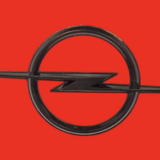 Topic Author
Topic Author
- Storz
- Has the Hang of it
- Followers: 47
- Posts: 73
-
Points:
1486
Post #719250
Thank you for your help!
-

- Nikon Shooter
- Oh Wise One
-
- 3S 3X 810 850
- Followers: 197
- Posts: 13795
-
Points:
88932
Post #719257
1, make sure you hit the right ƒ for a correct exposure and
2, control the DoF.
With a bit of practice you will be fluent in the selection.
Light is free… capturing it is not!
-

- Ozzie_Traveller
- Apprentice
-
- Currently using a Panny FZ-300 and FZ-2500 with occasional use of a Panny mirrorless G-series
- Followers: 124
- Posts: 2713
-
Points:
54226
Post #719266
The aperture settings in the camera are used for three main things ..... a) exposure control in conjunction with the best shutter speed, -or- b) to create / determine the Depth-of-Field that you want for the scene, and/or c) to determing the level of image sharpness from the centre to the corners of the photo
Looking at these in reverse ... sharpness - if you use a magnifying glass to look at a subject, you will quickly see that the edges of the image are blurry when compared with the middle. Camera lenses are much better, but as we are a fussy lot !! we want good edge sharpness as much as possible. So comes the recommendation to use a mid-range aperture for good image quality, and to be aware that when using the lens at wide-open (small aperture numbers) then the IQ may not be perfect
Secondly- when you have a subject that needs more or less Depth-of-Field, then you can run the apertures down to F16, F22 if needed, or out to F4 maybe if you do not need DoF
Finally, it is alwayas a balancing act (like a child's see-saw) to balance the Aperture to the best Shutter speed so that the exposure is correct and the end result is what you wanted
Remember also that the aperture number is the bottom of a fraction ... the diameter of the aperture hole is a fraction of the millimetres of the lens focal length. So small numbers F2, F4 etc are 1/2 - 1/4 of the focal length and large numbers F16, F22 are 1/16 or 1/22 of the focal length
Hope this helps
Phil from the great land Downunder
www.flickr.com/photos/ozzie_traveller/sets/
-

- Carter Gledhill
- Lone Wolf
-
- Nikon D810
- Followers: 66
- Posts: 201
-
Points:
3491
Post #719342
-
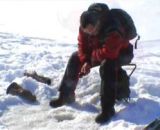
- KenMan
- Master of the Lens
-
- Nikon D810
- Followers: 214
- Posts: 1548
-
Points:
12586
-
 Topic Author
Topic Author
- Storz
- Has the Hang of it
- Followers: 47
- Posts: 73
-
Points:
1486
-

- db3348
- Master of the Lens
-
- Several : Canon digital , Nikon and Mamiya film cameras
- Followers: 70
- Posts: 1926
-
Points:
22772
Post #719670
But remember that the amount of background blur depends not only on aperture , but also on distance from you to subject and distance from subject to background , and focal length of lens (from same camera position) .
Wider aperture (e.g. f1.4 , f/2 , f/2.8 ... ) : more background blur
Smaller aperture (e.g. ... f/11, f/16 , f/22 ) : less background blur
Closer camera-to-subject distance further subject-to-background distance : more background blur
Further camera-to-subject distance , closer subject-to-background distance : less background blur .
Shorter focal length (from chosen camera position) : less background blur
Longer focal length (from same camera position) : more background blur
Hope that helps .
-

- hghlndr6
- Master of the Lens
- Nikon: P510, D600, D7100
- Followers: 1222
- Posts: 1650
-
Points:
28119
Post #719680
Storz wrote: So is there an aperture you use most when you don't care about background blur?
Thank you all.
Blur can also occur in the foreground. So Background blur isn't my deciding criteria ... Depth of Field is.
The first thing I ask myself before shooting anything is, "do I have any depth of field concerns?" The answer is usually yes. I usually want either a deep or a shallow DOF, so aperture will be my priority and I'll set the aperture small or large accordingly. If the answer is no, then I'll use something like f/8 or f/11.
The second question I ask myself is "do I have any shutter speed concerns?" If the answer is no, then I'll be working with aperture priority, as above. If the answer is yes, as in stopping motion or as in showing motion blur, and the answer to question 1 is also yes, then that's a problem that I'll try to resolve either by working completely in manual mode and adjusting ISO, or by enabling auto-ISO.
-
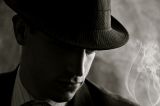
- Garbo
- The Lounger
-
- Nikon D300
- Followers: 188
- Posts: 1273
-
Points:
10288
-
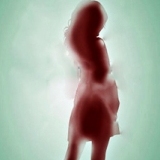
- Stacy Craig
- Snapobsessed
-
- Canon 5D Mark III
- Followers: 134
- Posts: 429
-
Points:
4956
Post #720230
-

- Hoss
- Photography Hooked
-
- Nikon D7000
- Followers: 114
- Posts: 839
-
Points:
5495
-
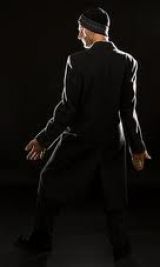
- Prago
- Master of the Lens
-
- Nikon D300
- Followers: 231
- Posts: 1665
-
Points:
13315
Post #721943
SWM into chainsaws and hockey masks seeks like-minded SWF. No weirdos, please
-
 Topic Author
Topic Author
- Storz
- Has the Hang of it
- Followers: 47
- Posts: 73
-
Points:
1486
-

- JaneK
- Oh Wise One
-
- Nikon D750
- Followers: 1672
- Posts: 13336
-
Points:
81850
-

- EtherArts
- New Kid On The Block
-
- Followers: 49
- Posts: 16
-
Points:
1486
Post #755499
- Forum
- Photography and Camera Forum
- Taking the Photo | Editing | The art of Photography!
- Beginner Photography Forum
- How do you select your aperture in your photos?
Latest Reviews
Nikon’s retro-looking Nikon Zfc is anything but retro. Under its classic body is a host of features and amenities that make it a worthwhile compact mirrorless camera for 2024.
The Canon EOS R50 is one of the newest R-system cameras from Canon. Is it worth your money? Find out all the details you need to know in this comprehensive review.
The Sony FE 70-200mm f/2.8 GM OSS II is Sony’s flagship mirrorless zoom lens. As such, it’s loaded with features and has a top-shelf build quality that makes it a top pick!
The Leica SL2-S is an attractive, premium mirrorless camera with photo and video specs that are sure to impress. And with the legendary Leica name, you know this camera exudes quality!
Forum Top Posters
-
1Travis Brunson 1 post
-
2Razky 1 post
-
3Esseff 1 post
-
4ShutterPal 1 post
-
5CaptNemo 1 post
-
6db3348 1 post
-
7Garbo 1 post
-
8Foggy 1 post
Latest Articles
The Olympus OM-D E-M10 Mark IV is a micro four thirds camera released in 2020. It’s an entry-level system along with the OM-D E-M5 Mark III. Use this guide to determine which one is best for you!
Blue hour photography might not be as well known as golden hour photography, but it is every bit as good a time to create epic images of landscapes. Learn how in this quick tutorial!
Nikon’s retro-looking Nikon Zfc is anything but retro. Under its classic body is a host of features and amenities that make it a worthwhile compact mirrorless camera for 2024.
Moving from taking snapshots of your dog to creating beautiful images doesn’t have to be that difficult! Use the tips outlined in this dog photography guide, and you’ll get better results in no time.
Acrylic print photos are a beautiful way to display your favorite images. But they don’t come without some questions. Get all the answers you need about this medium in this guide!
Where do you get your landscape photography inspiration? Is it from masters like Ansel Adams? Or perhaps viewing art from other genres? We’ve got these and a few other sources for you to check out!
The Canon EOS R50 is one of the newest R-system cameras from Canon. Is it worth your money? Find out all the details you need to know in this comprehensive review.
Too often, affordable online printing companies don’t meet your expectations of what a print should look like. But there are some choices that combine affordability with superb quality!


















